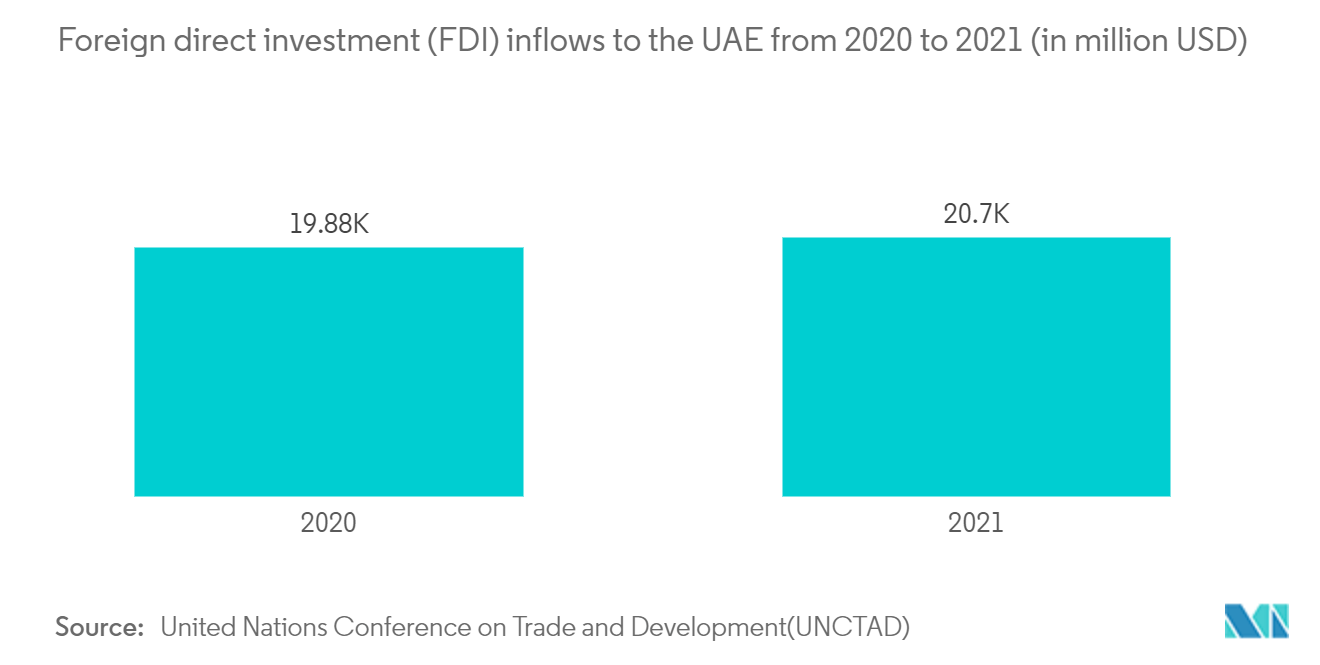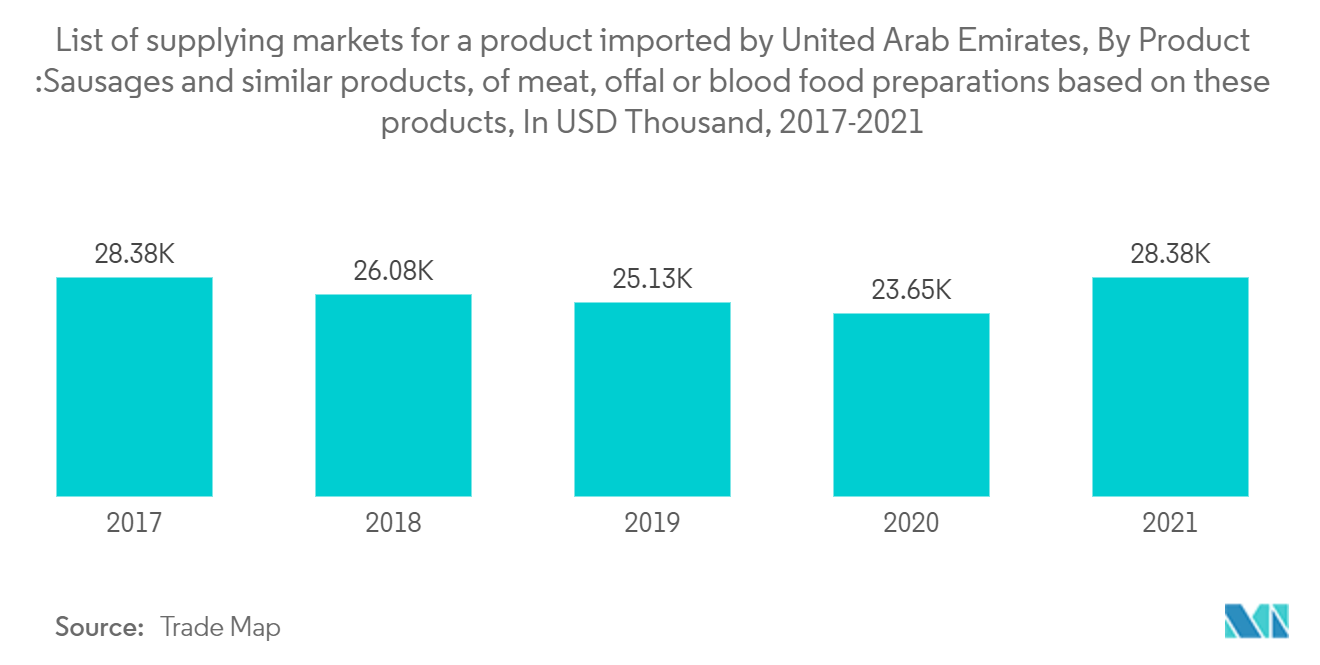Market Trends of UAE Cold Chain Logistics Industry
This section covers the major market trends shaping the UAE Cold Chain Logistics Market according to our research experts:
Dominance of 3PL Companies over Cold Chain logistics
Since the UAE government has implemented initiatives like the National Innovation Strategy, the Dubai IoT strategy, the Dubai Blockchain strategy, the introduction of drones for last-mile delivery, the UAE National AI program, Smart Dubai, the Dubai 3D printing strategy, and the Dubai Data Initiatives, 3PL companies in the UAE are focusing on the logistics and warehousing market, as well as cold storage, dry storage, and supporting retail facilities. Since the majority of cold storage warehouses are currently concentrated in Dubai and Abu Dhabi, several 3PL companies sought to expand their operations to these other locations as well in order to take advantage of the industry's expanding potential.
The UAE government offers a variety of services to non-governmental organizations, relief organizations, as well as their manufacturers and suppliers, including air and ocean freight, customs clearance, warehousing, and local distribution of aid materials. These services are supported by data analytics and control tower services that are intended to boost freight visibility for urgent and complex emergencies.
The value of the inbound foreign direct investment is expected to expand at a 4% annual rate, according to the UNCTAD World Investment Report 2022. Compared to USD 19.884 billion (AED 73.04 billion) in 2020, the overall amount of foreign investment inflows in 2021 was USD 20.7 billion (AED 76 billion). Due to its business-friendly regulations, first-rate infrastructure, and structural improvements aimed at diversifying the economy, the UAE will continue to be a major source of foreign direct investment (FDI) into the region.
CEO of Business Link Hatem El Safty said that the UAE will bring in a significant portion of the USD 66 billion in possible FDI inflows into the Middle East, North Africa, and Pakistan (MENAP) in 2023 because foreign investors find the emirate to be a prime location for investment. Referring to a recent survey from the Institute of International Finance, he stated that the emirate is anticipated to bring in USD 22 billion in FDI this year as a result of its business and visa reforms, while the MENAP area is anticipated to bring in USD 56 billion. The UAE attracted foreign investments in a variety of sectors in 2022. The country is putting various measures into place to encourage investment in the industrial sector and increase its contribution to AED 300 billion (USD 81.68 billion) from AED133 billion within 10 years. The oil and gas sector accounts for 59% of total FDI contributions, followed by 10% in IT and communications.

Rising Imports of Food Products and Pharmaceuticals
With a population of 9.9 million, the United Arab Emirates (UAE) is expected to see real GDP growth of 3% in 2022. Demand for premium, organic, and specialty foods is growing as a result of rising incomes, shifting consumer preferences, and a robust tourism industry. The desire for western-style meals is being fueled in part by a sizable expatriate population. Many hyper/supermarkets offer a large variety of food.
To draw manufacturing and service businesses, Dubai has created Jebel Ali, the largest cargo port in the Middle East, as well as several free trade zones. The UAE serves as a regional commercial hub for the supply of agriculture and food. In Dubai's growing commerce sector, food is imported from the United States, the United Kingdom, France, Brazil, and Saudi Arabia. Dubai exports food to countries such as the US, UK, Germany, China, India, and Japan.
Dubai has developed into the busiest and most international food trading hub in the Middle East as the gateway to the African and Arab markets. The business of importing food and seafood into Dubai is one of the most important components of Dubai's economy. Dubai imported 9.9 million tonnes of food goods for AED57 billion in 2021 to meet demand, and this amount is likely to rise as Dubai's food consumption rises at a rate of 11% annually.
The number of pharmaceutical import shipments into the United Arab Emirates totaled 15.7K, and they came from 555 Suppliers. Most of the pharmaceuticals in the United Arab Emirates are imported from Germany, Mexico, and India. The top 3 pharmaceutical imports are India (350,268 shipments), the United States (180,047 shipments), and Pakistan (149,113 shipments), in that order.

